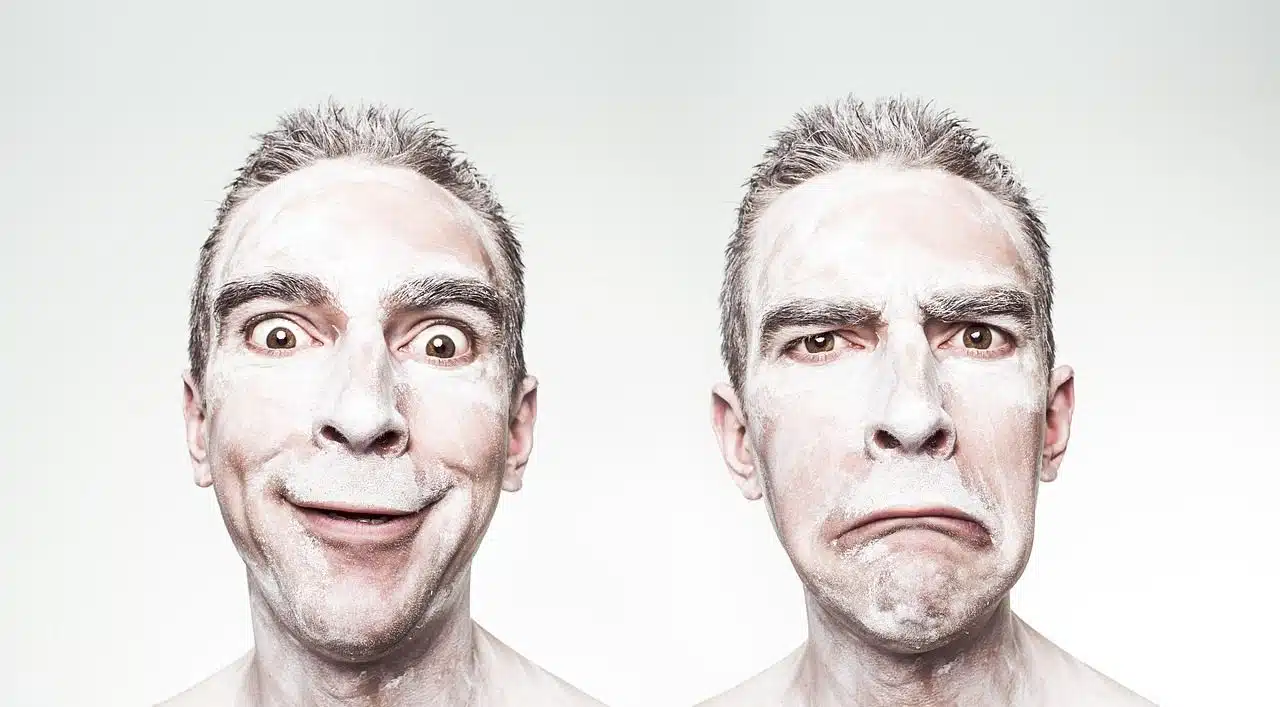
Facial expressions highlighting emotions are essential for artists who dedicate themselves to acting or the art of mimicry.
Facial expression is a concept that refers to a non-verbal language tool based on gestures and reactions linked to emotions , thoughts and particular states of mind .
Paying attention to someone's face , as well as analyzing their posture , behavior and even their oral language , is essential when establishing what kind of attitude or sensation a subject is showing.
Winking an eye as a symbol of complicity, sketching a smile when greeting loved ones, frowning at a worrying panorama, reacting with an expression of sadness when receiving discouraging news or making a face of disgust when faced with a nauseating smell are resources that exist. to know how to use and decipher in the art of non-verbal communication .
Types of facial expression
Facial expressions are segmented into different categories based on their characteristics.
One of the easiest types of facial expression to recognize is linked to the so-called Ekman theory of basic emotions . Paul Ekman , a psychologist of American origin, has pointed out that there are basic manifestations, or universal interpretation , motivated by surprise , anger , fear , joy or happiness , disgust and sadness . Over time, this professional expanded his list by incorporating emotions associated with contempt , relief , shame and arrogance , among others.
There are also gestures on the human face driven by jealousy , pain or regret , to list some complex emotions .
Although there are postulates that maintain that grimaces and gestures are born from feelings and sensations typical of our species, there are researchers who maintain that culture, the customs of a people, is decisive for the transmission and understanding of emotions .
Components of gestural communication
Facial muscles are essential components of gestural communication in human beings. Each expressive movement requires putting some part of the face into action: from a raise of the eyebrows or a blink to a yawn or a battery of grimaces .
There are, simultaneously, microexpressions . This is defined as very brief reactions concentrated on the face that are carried out automatically and involuntarily. In general, since they cannot be controlled, it becomes very difficult to disguise or hide them but, to the relief of individuals, it is not easy to discover and interpret each micro-expression .

You have to constantly observe the faces of babies and young children because they express their emotions with gestures, looks and crying.
Although we still have to work to determine if all the inhabitants of this world share the same code when it comes to reflecting feelings, it is possible to notice the existence of stereotypes linked to micro-expressions motivated by stimuli of an emotional nature that are common to humanity, without distinction of creed, race, nationality, gender or age.
Gestures are other valuable elements at an expressive level since they send signals that influence those who adopt the role of recipients of a message. Just a pout, a grimace, is enough to capture someone's attention or make yourself understood without the need to resort to speech.
Technology focused on facial expression
Currently we have numerous tools born from technology focused on facial expression .
One of them is artificial intelligence , a resource that, with radio or wireless waves, could decipher what and how a person's mood is at a certain moment thanks to the evaluation of heart rate, breathing rhythm and facial recognition .
Facial animation , meanwhile, is a technique that gives credibility to characters included, for example, in an animated film or a video game. Thanks to this, the protagonists of the material manage to make an angry face , make an expression of hatred when detecting a villain or blush , to list different alternatives.
Facial 3D modeling is another innovation linked to faces that is used in the field of aesthetic medicine to carry out more precise procedures and obtain the best possible results based on the features and needs of each patient.
Over the years, on the other hand, photography editing programs have emerged that allow you to modify images by changing the facial expression of the portrayed subject or beautifying the panorama, to name a few common possibilities.

Looks allow a connection between beings of different species because they enable deep communication and understanding without the need to exchange words.
Problems that affect the appearance
There are, unfortunately, mental health conditions, accidents and problems in the areas of health and well-being that affect the appearance .
The smile and normal movement of the muscles , for example, can be lost as a result of facial paralysis . In the rehabilitation stage, those who suffer from this pathology have available the so-called mirror therapy for facial paralysis that invites them to make symmetrical movements in front of a mirrored surface to regain strength, exercise and relearn certain gestures .
Science has also put a magnifying glass on the link between Parkinson's disease and facial expression . Since losing expressiveness is a not so well-known symptom of this disease, there is a lack of information available to the common people in society to know how to act and bond with a family member or acquaintance with difficulties when communicating or expressing emotions .
